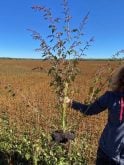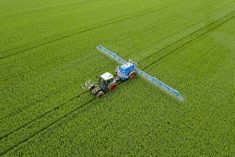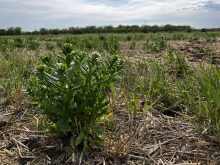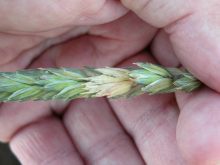A Kansas State University weed scientist says he’s figured out why glyphosate-resistant kochia is like a “cockroach of the plant world.”
Mithila Jugulam, assistant professor of agronomy, led a study that looked at how kochia evolved resistance to the herbicide. The researchers found that kochia has evolved to have multiple copies of a gene code that targets glyphosate. These copies enable the plants to survive the field rate of glyphosate applications.
“It’s a very novel resistance mechanism and is becoming prevalent in a number of glyphosate-resistant weeds, including Palmer amaranth, common water hemp and kochia,” Jugulam said in a Kansas State release.
Read Also

Manitoba sclerotinia picture mixed for 2025
Variations in weather and crop development in this year’s Manitoba canola fields make blanket sclerotinia outlooks hard to pin down
“Glyphosate works by stopping an enzyme called EPSPS that is crucial for production of aromatic amino acids in the shikimic acid pathway. If EPSPS is disrupted, the plant eventually dies,” the release says.
The researchers found that glyphosate-resistant kochia had duplicated several EPSPS copies that stacked alongside each other on a single chromosome.
Researchers also found that the more copies of EPSPS kochia had, the higher tolerance it had against glyphosate. For example, kochia plants with nine to 12 EPSPS copies could survive twice the recommended amount of glyphosate, while a plant with 16 copies could withstand six times the amount.
Jugulam said this resistance was evolved as the result of continuous use of glyphosate and the lack of herbicide diversity.
“Herbicides are not known to cause mutations in plants,” Jugulam said. “The resistant individuals present in the population initially are at low levels and slowly dominate over the susceptible plants if selection with the same herbicide continues.”



















